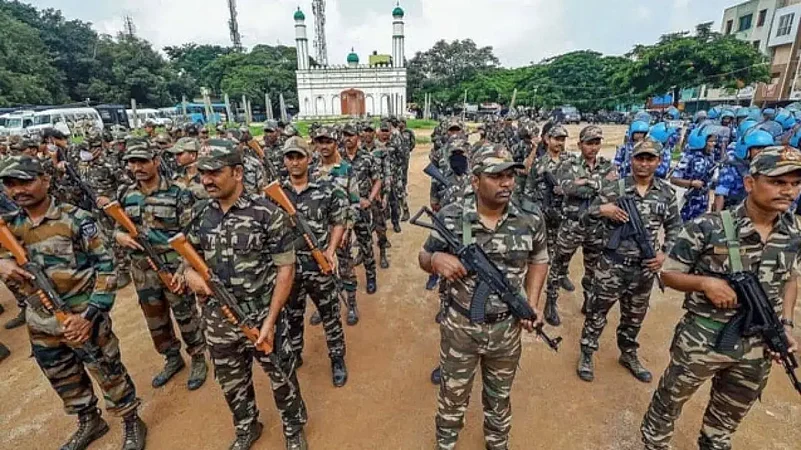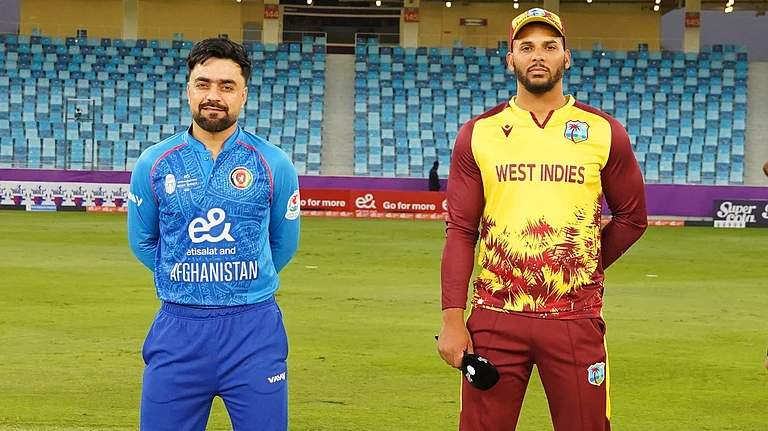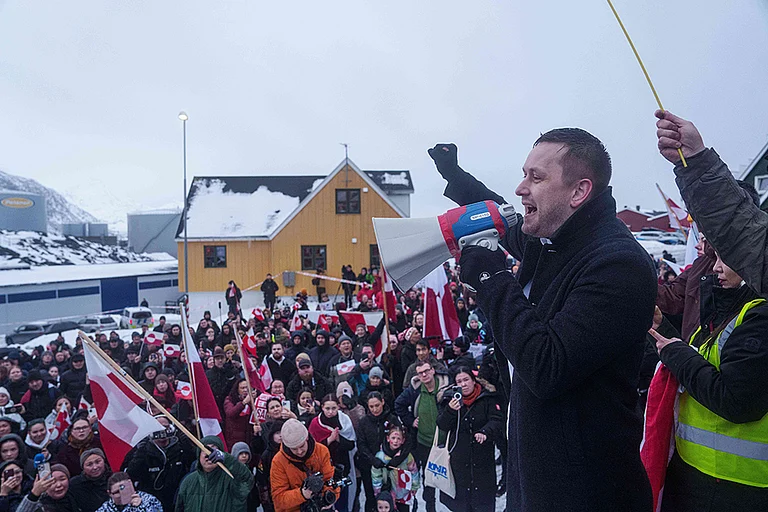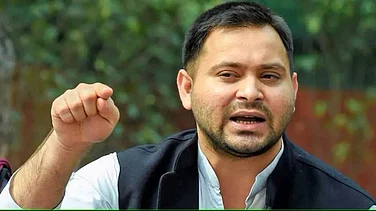It may appear a coincidence that the Karnataka High Court’s decision to allow Ganesha Chaturthi celebrations at Hubballi Eidgah Maidan came on the day the Supreme Court dismissed contempt proceedings related to the Babri mosque case. Both the towns are connected by a thread that changed the course of Indian politics. Hubballi's Eidgah Maidan holds a similar place in Karnataka as Ayodhya has in north India. If the temple movement strengthened the BJP in Hindi-speaking states, the Eidgah campaign of the 1990s led by the Sangh Parivar eventually brought the party to power in Karnataka. With the assembly elections in Karnataka slated for early next year, the political significance of the Ganesh celebrations at the maidan can’t be overestimated.
In fact, soon after the ruling by the Dharwad bench of the Karnataka High Court, a pandal was set up on the Eidgah Maidan, also called Kittur Rani Chennamma Maidan, with an idol of Ganesha on Wednesday. Vishwa Hindu Parishad’s district president Sanjeev Badaskar heads the Rani Chennamma Gajanan Utsav Mahamandal. The Ganesha celebrations at the maidan mark yet another addition to a series of events that have polarized the atmosphere ahead of the elections in Karnataka.
The legal cases
The Eidgah land belonged to the Hubbali municipality before a local Muslim organisation, Anjuman-e-Islam, got a 999-year lease of the land in 1921 and was allowed to hold Eid prayers twice a year. For the remaining part of the year, the maidan was used for sports, fairs and public meetings. A controversy surfaced when the AeI decided to construct some structures at the maidan in 1990, drawing protests by Sangh Parivar leaders. The matter soon flared up, with senior BJP leaders announcing that they would unfurl the tricolor at the maidan on Republic Day in 1992, coinciding with the then party president Murli Manohar Joshi’s announcement to unfurl the flag at Lal Chowk in Srinagar on the day. In the subsequent years the BJP upped the ante in Hubballi, and tried to hoist the flag at the maidan on several occasions, leading to communal tension in the area. Among the BJP leaders who led the Hubballi campaign was Uma Bharti, who had also played a major role in the Ram temple movement. With the ruling Congress government in Karnataka not granting permission to the BJP leaders, Bharti was arrested by the state police in 1994.
A dispute over the right of the AeI to construct some structures had taken a communal turn before the SC ruled in 2010 that the maidan was the property of the Hubbali-Dharwad Municipal Corporation, with the AeI authorized to hold prayers only twice a year. But by then Hubballi had seen curfews, violence and killings of several persons in communal tension, including five persons who were killed in police firing when they tried to hoist the national flag at the maidan in 1994.
The latest case relates to the permission the municipal corporation had recently given to celebrate the Ganesha festival at the Eidgah Maidan to some Hindu organisations. Subsequently, Anjuman-e-Islam filed a petition before the HC that by allowing the Ganesha festivities at the maidan, the municipality was “trying to convert the place of worship”. The municipal corporation argued that since the petitioner does not own the property, it has the right to use the maidan temporarily. The High Court bench headed by Justice Ashok S. Kinagi said in a late-night order on Tuesday that the HDMC was the absolute owner of the Hubbali Maidan, and had the right to allow the festival.
On the other hand, the Babri Masjid case relates to contempt proceedings over the demolition of the mosque in 1992. A petitioner named Aslam Bhure had gone to court against some officers of the UP government and BJP-RSS leaders for violating the undertaking given to the SC about the maintenance of law and order in the area. But a three-judge bench of the Supreme Court presided by Justice S K Kaul closed the cases on Tuesday saying that since the central issue in the case had already been decided by the apex court in 2019, nothing else survives “for consideration”. In other words, since the title of the land had already been awarded to Hindu litigants, the contempt proceedings hold no ground.
In both cases, thus, the claims of Hindu organisations triumphed over the minorities.
The BJP’s gains
If the Ayodhya movement laid the BJP’s foundation in the Hindi belt, the Hubballi campaign brought the party to power in Karnataka, the only southern state that has ever seen the party’s stamp. With a mere four seats in the state assembly in 1989 polls, the party jumped to 40 in 1994, and 79 in 2004 and finally formed the government in 2008 with 110 assembly seats. The BJP won 18 of the total 28 seats in Karnataka in 2004 LS elections, 19 in 2009, 17 in 2014 and 25 in 2019. Of the total 130 LS seats in Karnataka, Andhra Pradesh, Telangana, Kerala, Tamil Nadu and Puducherry, the BJP won only 21 in 2014, with 17 from Karnataka alone. In 2019, Karnataka contributed to 25 of BJP’s total 29 LS seats in the region. With Hubballi again hitting the headlines over a religious issue, the area is tense and politics volatile.


























